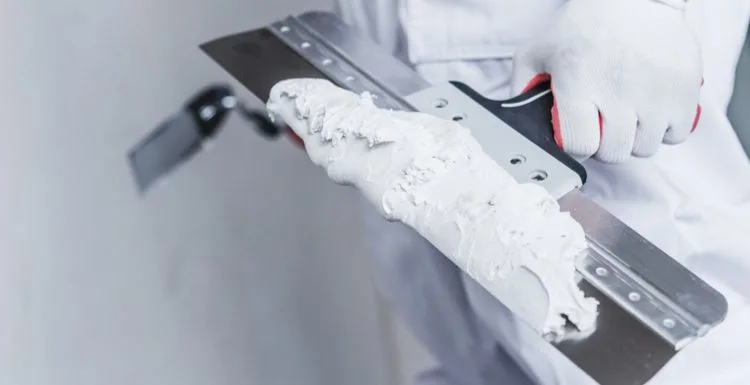What’s the difference between a joint compound and a spackle?
Check out how these products compare so you can make the best choice when it comes to your home repair projects. Is the spackling compound the same as the joint compound?
The short answer is no. While joint compound and spackle are similar to each other, they each have unique uses.
The joint compound has been used in more significant projects, such as drywall installation and larger drywall repair projects.
Spackle is better suited for smaller repair jobs such as filling in nail holes and covering up dents and small cracks in walls.
Spackle vs. Joint Compound
So, how are joint compounds and spackles the same, and how are they different? When would you use one product instead of the other?
Anytime you’re unfamiliar with a product that you need to work properly for you, it’s wise to learn what affects its performance.
Know that you can use spackle and joint compounds for some of the same jobs, but these are two different compounds with different uses and behaviors.
What is Joint Compound?
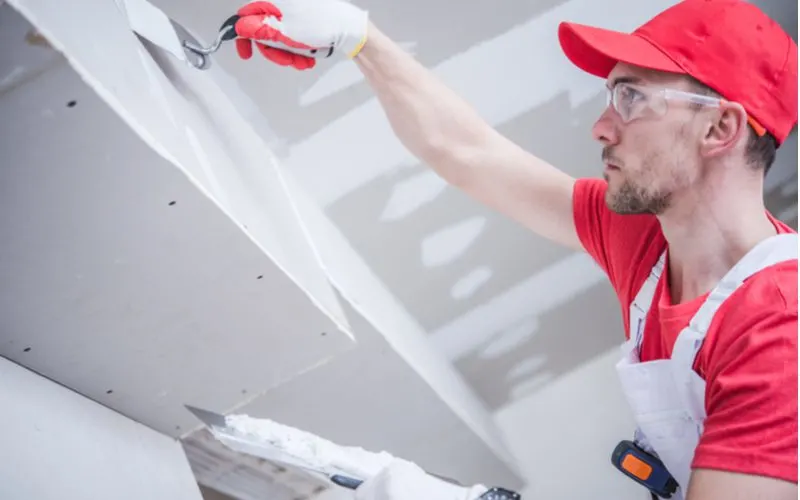
Virrage Images/Shutterstock
Among professionals, joint compound is also called drywall compound, or drywall mud. It has a similar consistency to cake frosting or mud. It usually comes in a white paste primarily made of limestone and water.
But they can also include things such as perlite, talc, and silica that help it lay smooth. There are different types of joint compounds, but most people choose an all-purpose compound because they can use it in all construction phases.
However, there are more robust versions than an all-purpose compound that you might want to consider. You can also buy a quick-drying version that’s in powder form and add water. But it can be a mess to mix, and you need special tools to do so.
Typically, you use joint compound when you’re hanging drywall. When placing slabs of drywall next to each other, you’ll need to join the seams. Joint tape, a paper or plastic mesh roll of tape used in drywall construction, is put over the seams.
Then, a trowel helps to apply and smooth the joint compound over the joint tape. After some drying time, you sand everything smoothly. Then paint, and you have a completed wall.
Use joint compound if you have more extensive wall repairs or holes to patch. If necessary, replace the damaged drywall with a new piece.
Then cover the seam or hole with joint tape and apply joint compound to the wall. Let it dry before sanding it smooth.
What is Spackle?
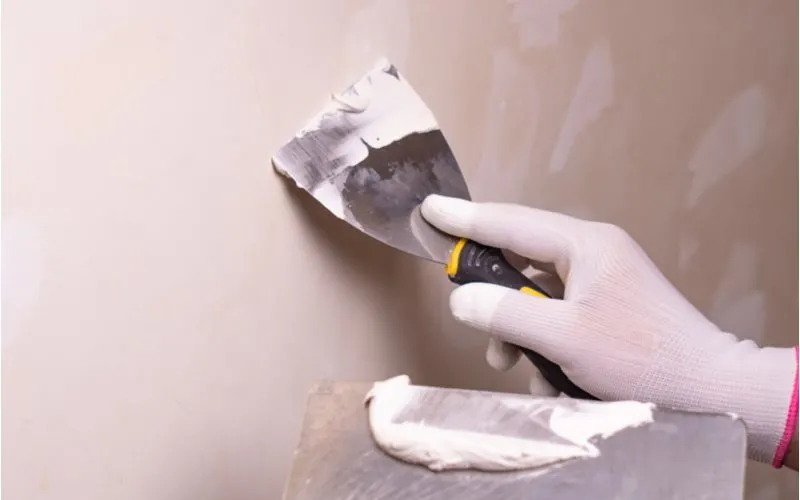
VK1971/Shutterstock
Spackling compound, or spackle, has a thicker, paste-like consistency than joint compound. Made primarily of limestone and water, it comes premixed in a tub, and there are several different types of spackle made for specific applications.
Spackle includes other ingredients, such as silica or vinyl, depending on its use. While you generally use spackle for minor repair jobs such as touching up nicks in your walls, you might need it to go the extra mile.
This is when you would look for a particular type, such as an acrylic spackle, for other surfaces, including brick or wood.
Use spackle for simple wall repairs, such as fixing dents or filling in nail holes. Using a putty knife, just apply the spackle to a hole. Let it dry for 30 minutes before sanding it smooth.
What Type Should I Use?
Be aware that there are different types of spackle and joint compounds, depending on what specific needs your repair job demands:
Spackle Types
- Standard: for general patch jobs; popular because it’s durable
- Lightweight: For small patch jobs such as nail holes, it is easier to apply
- Vinyl: For larger patch jobs because it won’t crumble
- Acrylic: Similar to vinyl, it can be used on other materials such as wood and brick
- Epoxy: more complicated to use but a great choice for exterior wall patches
Joint Compound Types
- General All-Purpose: For all large jobs, but has a long dry time
- Lightweight All-Purpose: Easier to apply, but doesn’t bond as well
- Setting Compound: Great for bathrooms because it doesn’t soften when wet
- Taping Compound: Used primarily when hanging drywall, but harder to sand
What About Plaster?
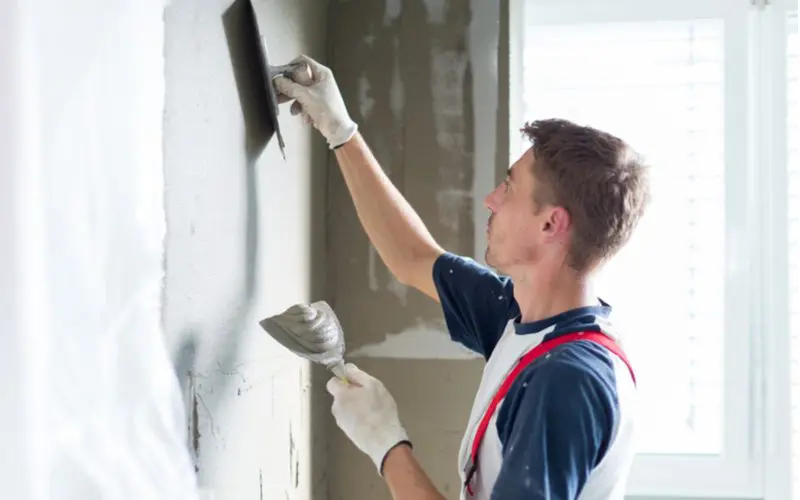
Matj Kastelic/Shutterstock
If you’re thinking about using joint compound vs. spackle, you might be wondering where plaster fits into the mix. The short answer is that you can’t use it in place of joint compound, but you can use it in place of spackle in small projects.
Plaster contains similar ingredients as spackle and joint compound, but with the addition of sand. This makes it a thicker, harder product that’s best suited for filling in screw holes or joints.
While you might be tempted to use plaster in place of joint compound in larger projects, it won’t give the same smooth finish you get with joint compound.
Things to Consider
Consider these pieces of information when choosing the right compound for your next project.
Things to Consider With Joint Compound
What makes it great at what it does also makes it challenging to use.
- It only averages $8 a quart, but you use a lot.
- It can take up to 24 hours to dry.
- Joint compound has a lighter consistency but is more difficult to apply.
- It generally works best when used with joint tape.
- The joint compound is susceptible to shrinking and cracking if not applied properly.
- It is very durable when dry, but this makes it difficult to sand down smoothly.
Things to Consider With Spackle
Spackle works wonders in small spaces, as long as you know how to use it.
- Spackle generally costs more than $14 a quart, but you’ll buy one bucket and use it forever.
- It dries out quickly if exposed to open air, so be sure to store it properly between uses.
- Most types dry in less than an hour.
- Spackle is thick like mud, making it quick and easy to apply.
- It also shrinks and cracks, but less so than a joint compound.
- It will crumble if used in larger spaces than recommended.
- It’s easier to apply and sand down but creates a lot of dust, so wear protective gear.
Frequently Asked Questions
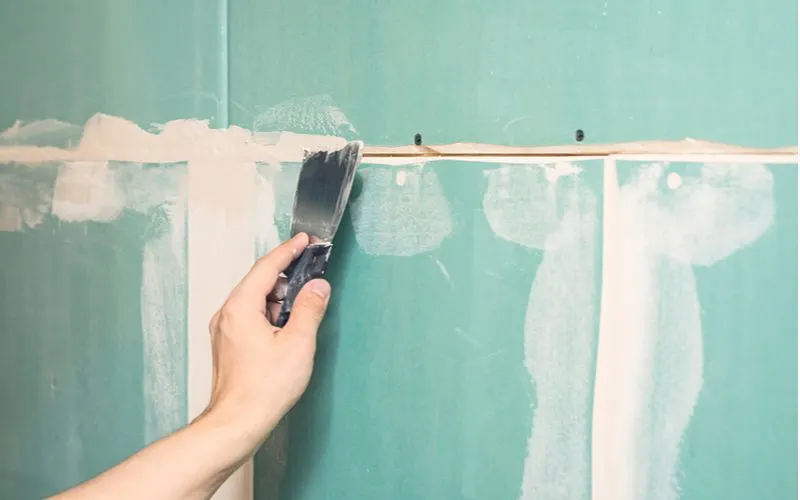
Alena TS/Shutterstock
Prepare for your next home project by ensuring you have answers to all your questions about spackle and joint compound.
Joint Compound vs. Spackle: How to Choose
Look at the job you need to be done. Both products are putties used in wall repair and drywall installation.
They consist of similar ingredients, and to the average person unfamiliar with either of them, they look the same. But what makes them different also impacts their use.
When comparing them, joint compound is lighter and harder to apply while spackle is thicker and easier to apply.
Spackle dries inside of an hour, but a joint compound takes roughly 24 hours to dry. You might use more joint compound for one project, but it costs less per quart.
Spackle costs more, but you use so little of it that a quart will last you forever.
What Is Joint Tape and Why Do I Need It?
Use joint tape when working with joint compound to hang drywall or repair large areas.
This special construction tape is typically either a paper or mesh fiber that holds drywall slabs together.
It works with joint compound to reinforce the drywall beneath and create a smooth finish on your walls.
Can’t You Just Substitute Joint Compound for Spackle?
Use a joint compound in place of spackle in a pinch. However, you cannot use spackle instead of joint compound.
Let’s say you have a small hole to fill and have a joint compound leftover from a previous job. You can use joint compound instead of spackle. This works because it holds up well in small spaces.
If you’re used to working with spackle, just be aware that joint compound tends to shrink a lot more, so you might need to layer it, and it will take longer to dry.
If you have a large repair job and would typically use a joint compound, spackle will not work.
It will crumble if used in a larger area. Spackle does smooth out better while wet. But once dry, it doesn’t sand as easily as a joint compound.
Are Joint Compounds and Spackles Safe to Use?
Anytime you cut or sand material that creates dust, protect yourself by wearing the appropriate protective gear.
Joint compound and spackle contain materials such as silica and gypsum, which are harmful when entered into the human body.
Always wear a proper dust mask or respirator and goggles when sanding these compounds.
Joint Compound vs. Spackle: Which One is Best?
We’ve covered all the basics you need to know about joint compound vs. spackle. Both of these products are valuable for their specific jobs.
As long as you know how each product works, you have everything you need to make knowledgeable choices for a smooth project.

